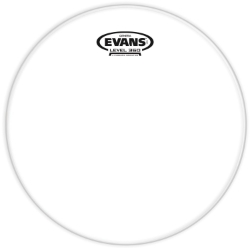One of the most obvious ways to get better sounding drums is replace the drum heads. Defining your sound and choosing the right head is a step in the right direction. For the most part, replacing the batter heads is enough. However, the overall tonal aspect of the sound of the drum doesn’t come from just the top head. In fact, the majority of the resonance, sustain and tone comes from the bottom head.
Commonly referred to as the “resonant” head, the name speaks for itself. The resonance, musicality, tone and presence are often influenced greatly by the quality and tuning of these heads.
Simply put, drum heads wear out. They need to be replaced from time to time. Of course, when you’re hitting a thin piece of Mylar with a wooden stick, this can be fairly obvious. However, the resonant head can often times be overlooked because they always appear brand new. If you think about what happens when you hit the drum, there’s a tremendous amount of power and vibration that moves through the shell.
The resonant is being influenced in the same way every time you sit down to play. Over time, these heads will become stretched and worn out. They begin to lose their character and become compromised. When this happens, the drum is harder to tune and both the sustain and overtones will be lost.
How often?
So, you’ve decided to change out your heads but the question remains: How often do I need to replace resonants? Obviously it can be fairly expensive replacing heads all of the time. However, my general rule of thumb is every 6 months. Depending on how often you’re playing, this can change. Again, use your ears and make the call.
Common Resonant Choice
Choosing the right resonant is actually fairly easy. Don’t get too caught up in deciding which direction to take. The most common choice for the bottom heads are Remo’s Ambassador. Another popular choice is the Evans Genera.
You can either choose coated or clear based on your preference. The common denominator here is single ply heads. The thinner head is a smart choice—in my experience—because it brings out the bright sustain and overall timbre of the drum.



